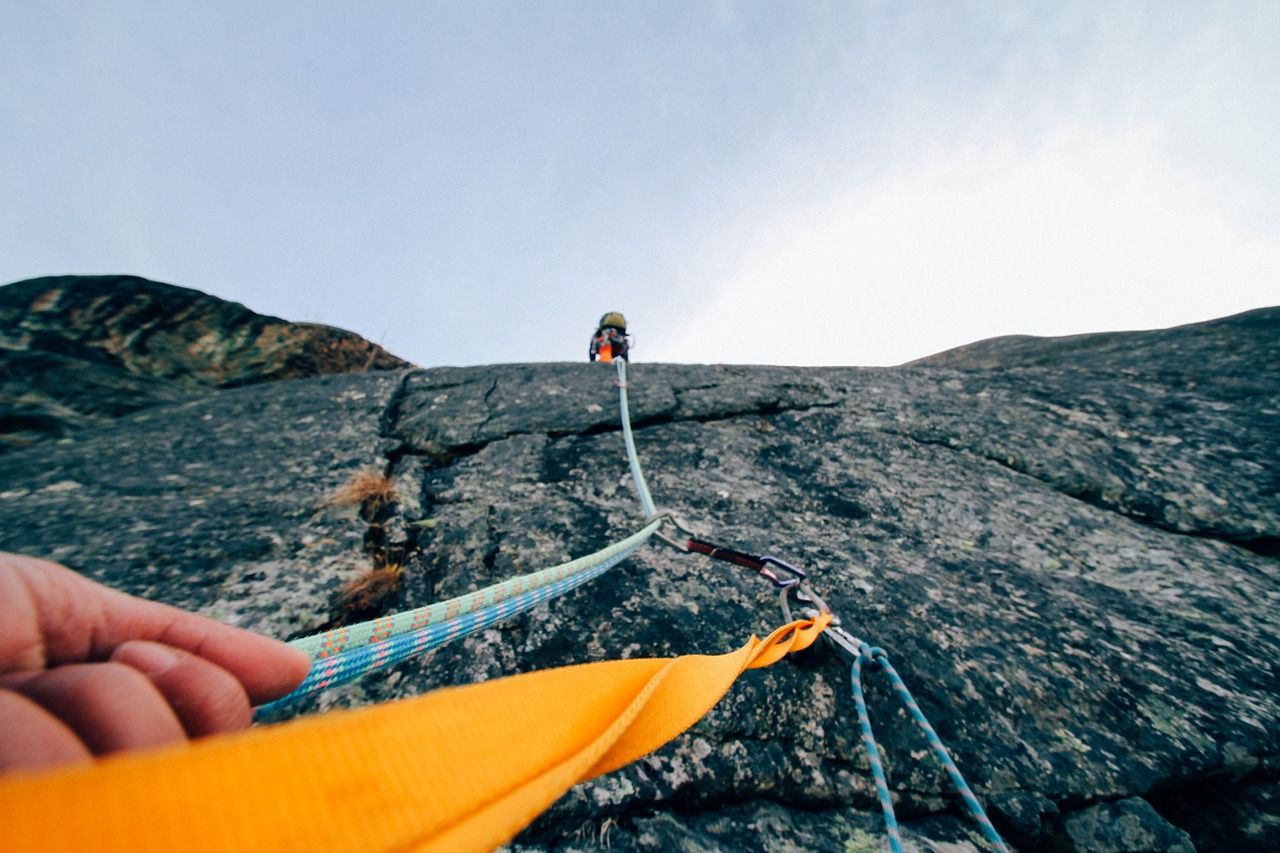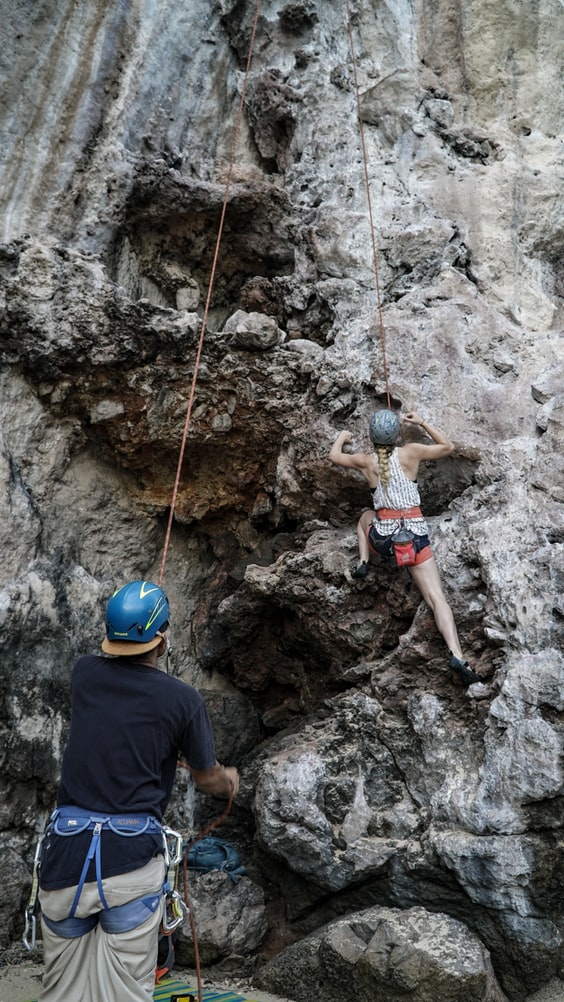While having an official guide certification is not necessarily a requirement to be a climbing guide, many agencies have started to seek out certified guides as a way to ensure safe and consistent climbing experiences for their clients. If you are considering a career path as a climbing guide, here is what you need to know.
Climbing Guide Certification Options
There are two major agencies that offer a climbing guide certification. For the purposes of this article, we will discuss only guiding in a single pitch environment (as it is the most common day trip).
Major Players
American Mountain Guide Association (AMGA)
Professional Climbing Guide Institute (PCGI)
Websites
https://amga.com
http://climbingguidesinstitute.org
Single Pitch Climbing Guide Certification Name
Single Pitch Instructor (SPI)
Single Pitch Guide (SPG)
Course Offering Locations
US/International by varying agencies
US/International by varying agencies
Course Length
3 Days
3 Days
Assessment Length
2 Days
1 Day
Locations Certification is Accepted
US
US
Cost for Course
Approx $550
Approx $450
Cost for Assessment
Approx $350
Approx $200
Prerequisites
Comfortable Leading 5.6/5.8 TR, AMGA member, 18 years old, 12 months climbing experience, 15 traditional leads, interest in instructing novice climbers
Comfortable on 5.6 trad, able to build 3-piece anchors, trad leading for at least 2 years, working knowledge of various knots and hitches
WFA/WFR Required at assessment
No- but to be a climbing guide WFR is recommended
No- but to be a climbing guide WFR is recommended
For aspiring climbing guides who are interesting in working internationally, the AMGA also offered a higher level of certification that is recognized internationally (Called IFMGA)
What to Expect for the Course
The AMGA SPI course will cover basic climbing technique, how to various types of anchors, how to choose the correct gear for different situations, how to apply knots and hitches like munter, clove, bowline, figure 8 on a bite/and overhand, fisherman’s, and various friction hitches. It will also discuss aspects of guiding like client care, and basic instruction techniques. Also addressed are basic rescue techniques and how to work on both top and bottom managed sites.
For the PCGI SPG course, you can expect to cover “Lead-Follow style guiding with up to two clients in straightforward single-pitch terrain. The emphasis is on top managed techniques, belay techniques, efficiency, stance management, teaching and facilitation skills, single-pitch specific rescue techniques, advanced anchoring, belaying, lowering, and rappelling techniques, and the fine art of leading with clients belaying you. This course provides students with the tools to successfully provide a safe and enjoyable experience for any given client in single-pitch terrain. The SPG does not include instruction in short roping, short pitching, intermediate belays, and complex approaches and descents. The training does not encompass guiding or instruction in glaciated environments” (PCGI)
Main Differences in Curriculum
I have gone through the AMGA SPI course and assessment. This course and assessment is very skills-based. They break the curriculum into 7 major categories: Risk Management, Client Care, Technical Systems, Application, Terrain Assessment, Mountain Sense, Movement Skills, Professionalism, and Instructional Technique. It was my experience that the technical aspects of the course were far more stressed in both the course and assessment than aspects like client care.
Speaking with climbing guides who have been through the PCGI curriculum, I have come to understand that their assessment is far more based on client experience and care, while of course paying attention to technical skills. They appear to integrate the two far more seamlessly and appear to truly value making the climbing experience 100% positive. During the course, great emphasis is placed on how to instruct and tips for working with emotions that often surface while trying climbing for the first time.
Tips for Success
- Again, speaking from experience from attending training with the AMGA, I would recommend working with an agency like the American Mountain Club before taking the assessment. This organization offers reasonably prices outings and classes for climbers to learn very similar skills that you will cover in the course. Coming into the course with a solid understanding of how systems work reduces stress greatly.
- Climb trad as much as possible, in as many situations as possible. The more experience you have working with the systems and mastering them will lend itself well to advanced techniques. The course emphasized being 3 steps ahead, always. So, when building systems or working with clients, always know what your next few moves will be so that you can be efficient, this also allows you to make adjustments as needed without panicking. When practicing, try vocalizing your next three steps in the process to get in the habit of always looking ahead.
- Takes notes and pictures. The instructors are so knowledgeable and experienced, that they will show some amazing tips for efficiency and management. With so much information so quickly, it can be easy to get overwhelmed. The more notes and pictures you can take during your course the better.
- Work with a skilled mentor. Someone who knows systems, the mountains, etc. Ask them to test you and give you scenarios to practice before taking your assessment. The more practice you can get the better. During the assessment, the instructors will try to throw some challenging scenarios at you, the more experience you have the better. Both AMGA and PCGI offer mentor classes- day trips with certified climbing guides to go over material and practice.
- During the assessment, realize that you are going to be questioned on everything you do. This doesn’t mean you necessarily did it wrong. Know you have a lot to learn, there may be a more efficient way to do something, but that doesn’t make it more “correct”. When you make a choice, so long as it’s safe and you trust it, stick to it. Be able to explain the choices you made and why they are reasonable and safe (in a respectful way, of course). The instructors will quietly stand over you while you are testing taking notes, this can be VERY intimidating. They will pull on your gear, shake their heads at your rope management, and stare at you when you start to sweat because they want to see how you handle the stress. Do yourself a favor: take three deep breaths and smile. You are doing this assessment because you LOVE climbing. Take it easy and make safe choices.
- Efficiency is key. Practice for time. I was told that you should never be away from your clients for more than 15 minutes. So from walking away to the top of a crag, setting up an anchor and getting back down you need to be efficient. Practice different setups on different terrain so that you can become quicker and quicker.
- Recognize personal climbing is very different than guiding. The same anchor you would use for you and your buddy will not fly for a guiding anchor in most cases. Be prepared to change how you think about setups.
Climbing guiding isn’t the most lucrative career, but it is a special one. Bringing new climbers into our community gives you the opportunity to lay foundational skills like communication, respect for the outdoors, etiquette, and a downright fun day. You meet some amazing people while guiding and are able to travel to some wonderful places. Keep it safe and good luck!
If you liked this article on climbing guide certification, we think you’ll also enjoy:
- Strategies for Safer Rappelling
- 5 Climbing Organizations You Should Care About
- Rock Climbing Gear Buying Guides









